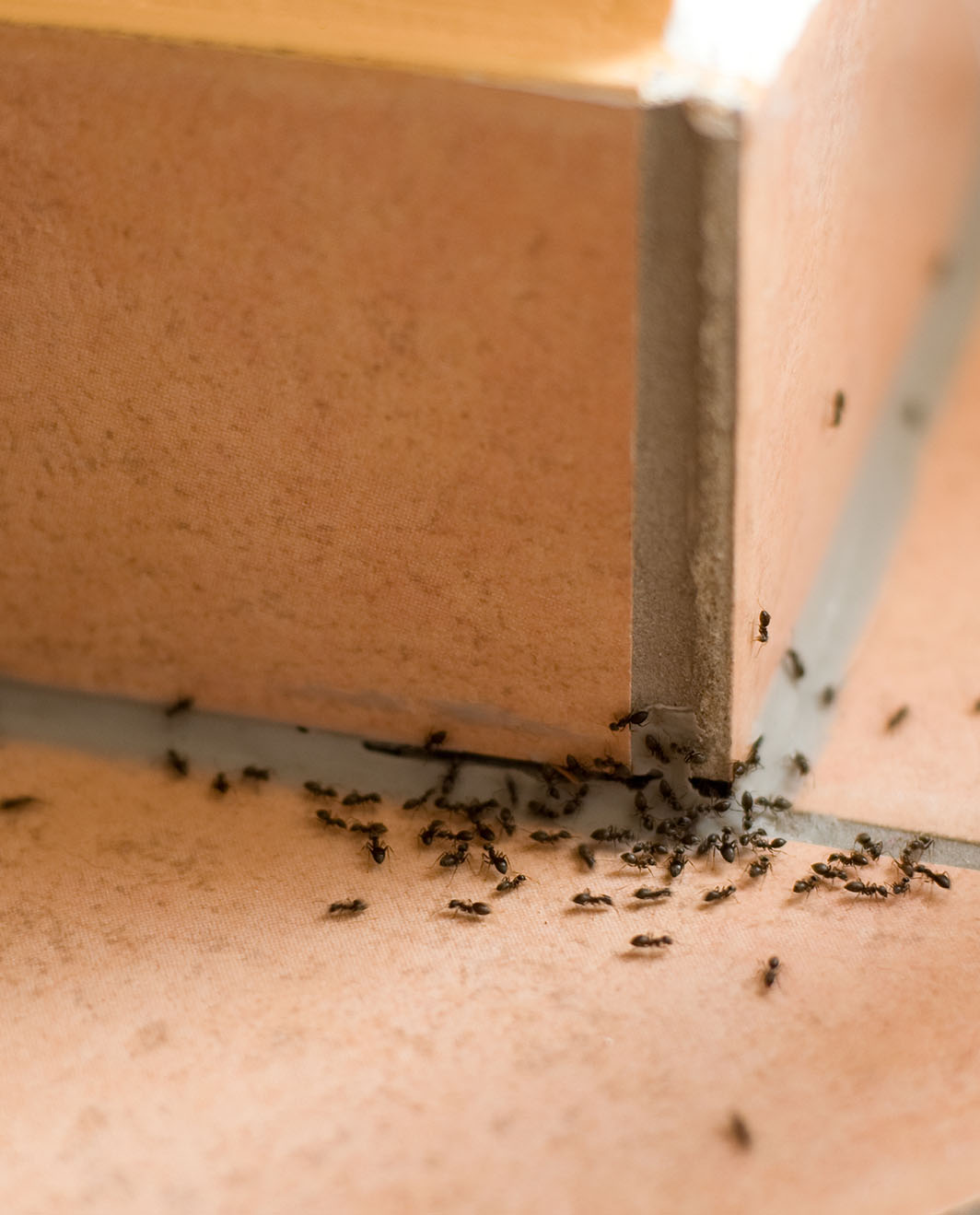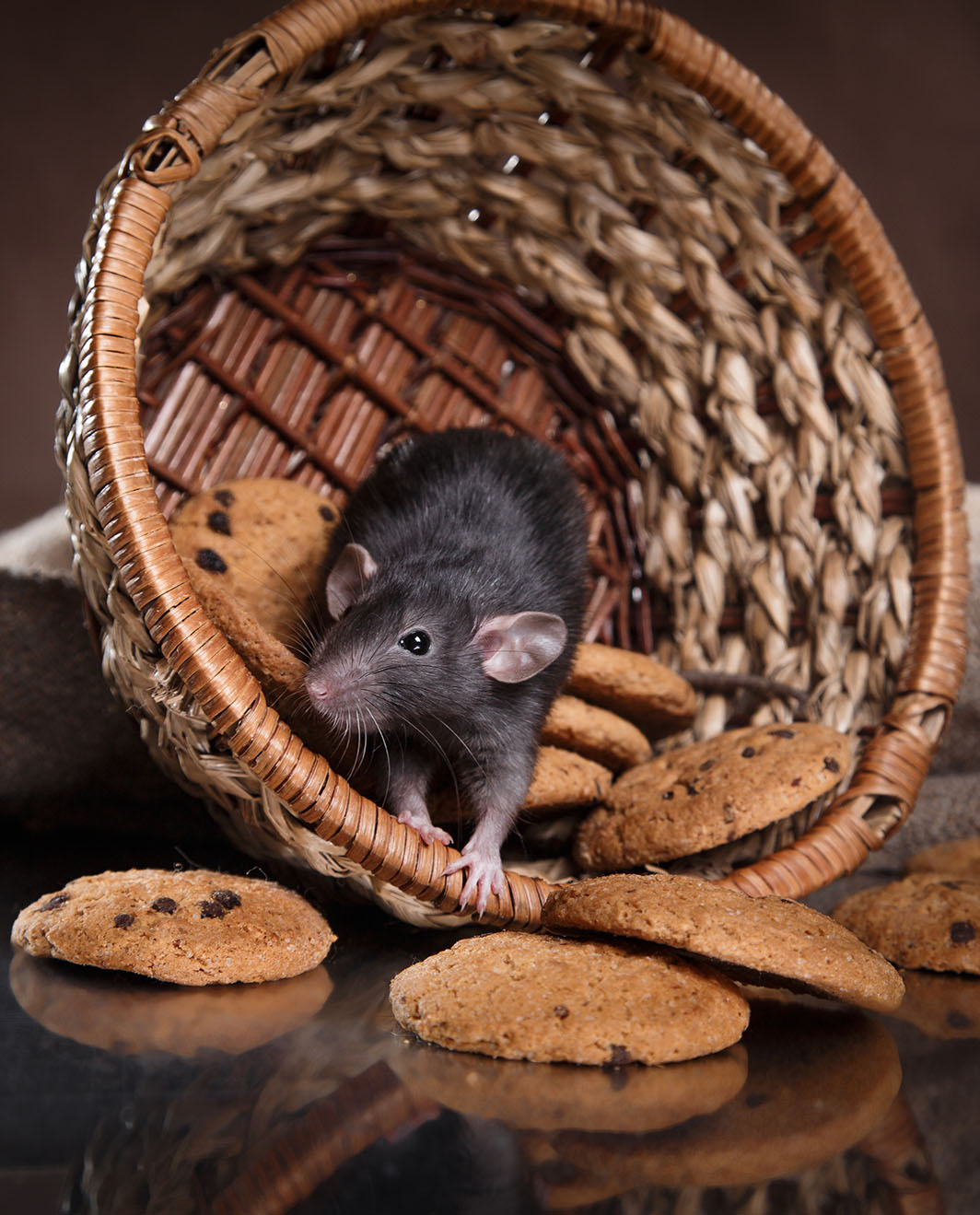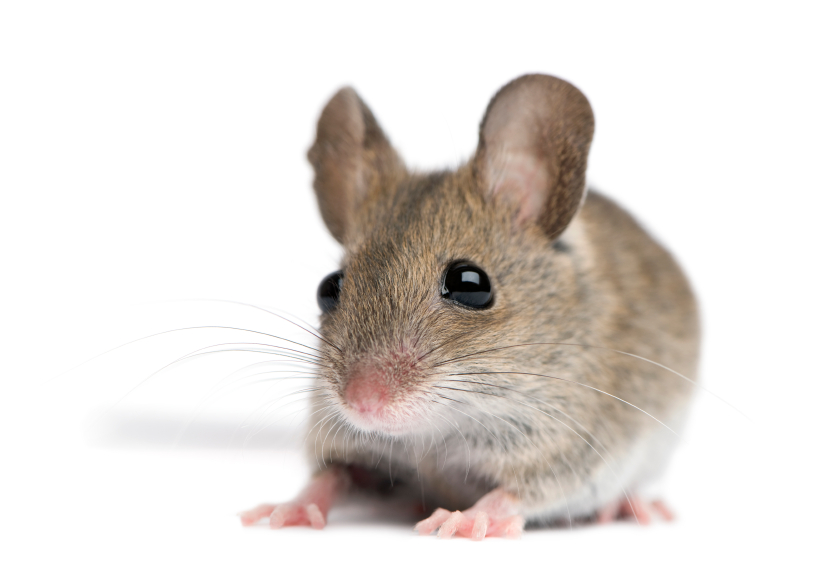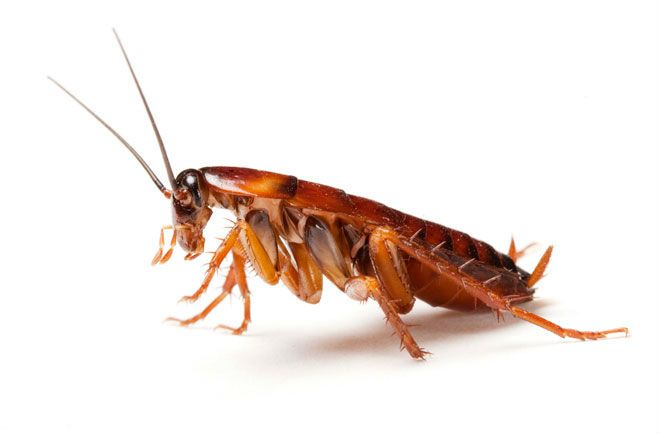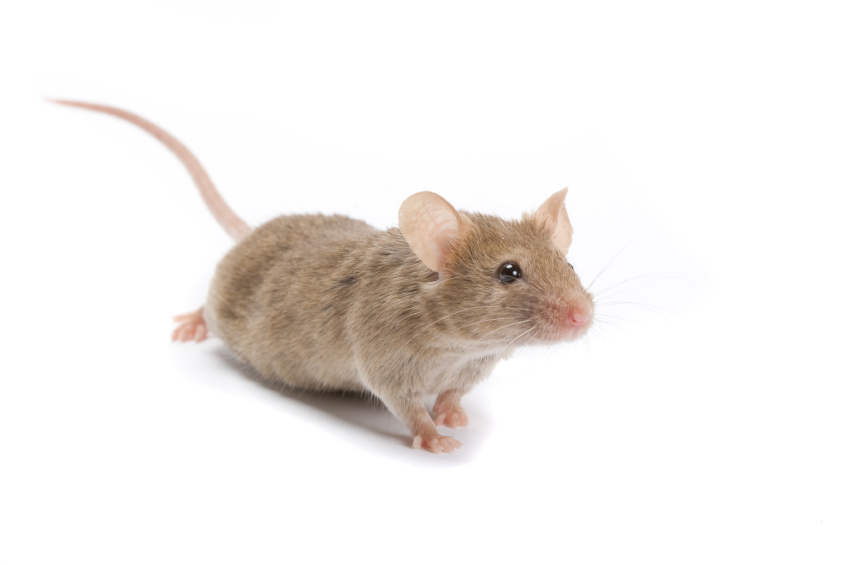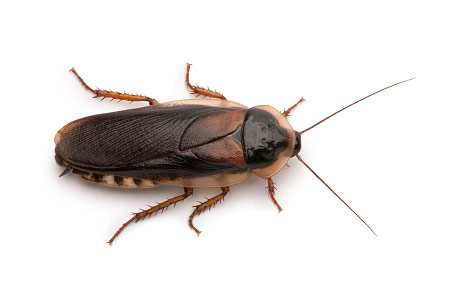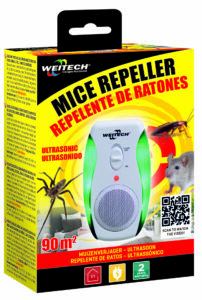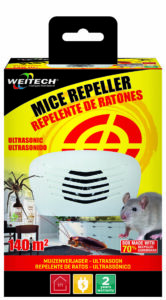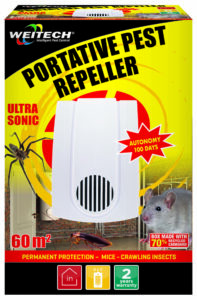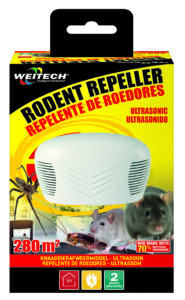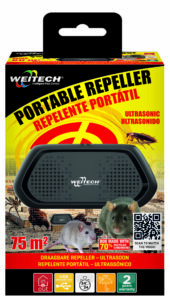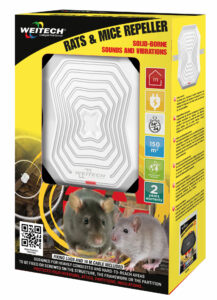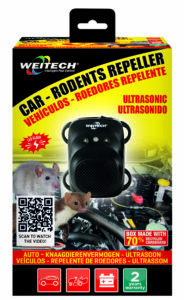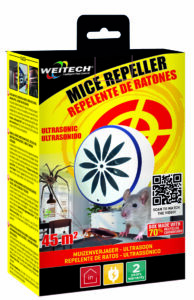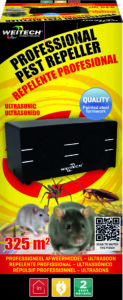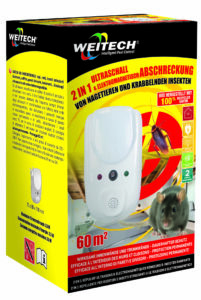Weitech electronic ultrasonic pest control devices for indoor use: against rodents and insects.
Ultrasonic signals behave like sounds: they are reflected by smooth surfaces and absorbed by porous or soft materials. They are more effective indoors than outdoors.
Pest Control Europe specialises in manufacturing and marketing ultrasonic pest control devices against rodents and insects.
Our aim?
To provide professionals and private individuals with effective solutions to keep pests permanently away from indoor areas.
With its experienced team constantly carrying out research, Pest Control Europe offers you innovative products that comply with European standards. They are easy to use, safe, quick, non-toxic and carry a two-year warranty.
Ultrasonic signals behave like sounds: they are reflected by smooth surfaces and absorbed by porous or soft materials. They are more effective indoors than outdoors.
Note:
- Ultrasonic signals cannot pass through obstacles: walls, doors, furniture, etc.
- Do not install these devices behind furniture or wall hangings.
- Place one or more devices in each room to be protected.
- Rooms equipped with textiles (wall hangings, fitted carpets, etc.) need a powerful module as these materials absorb ultrasonic signals.
- It is preferable to use 2 smaller devices placed in 2 different locations rather than one single larger model.
Pest Control Europe is a company listening to his customers In order to do so, we advise you on the choice of product you need and undertake to provide you with quality advice.
Rodent species have occupied numerous ecological niches and are present in the most arid terrestrial environments to freshwater environments. There are tree-living, terrestrial, burrowing, amphibian and even gliding rodents.
Examples of rodents include field mice, voles, rats, mice, chinchillas, beavers, dormice and squirrels. Contrary to popular opinion, the mole is not a rodent but an insectivore. The case of the hare and the rabbit is more complex: like rodents, they have two highly developed incisors, but they also have another pair which does not develop beyond a stump. In addition, they are exclusively herbivorous. They belong to another order: Lagomorphs. However, some classifications put rodents in a group containing both Rodentia and Lagomorphs.
The largest rodent is the Capybara, which can measure 1.25 m long and 50 cm high and can weigh as much as 65 kg.
(source Wikipedia)
Weitech indoor protection products:

